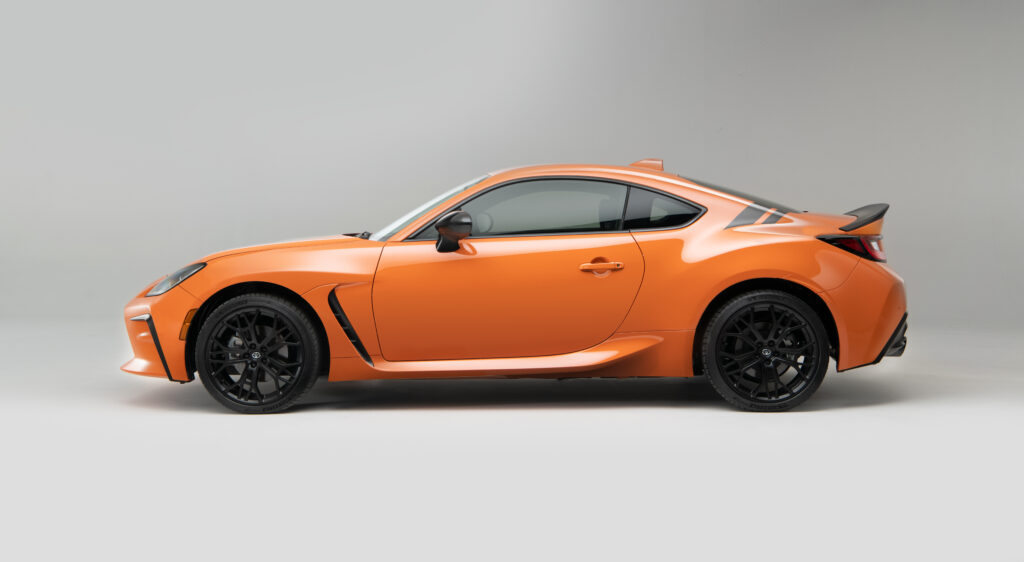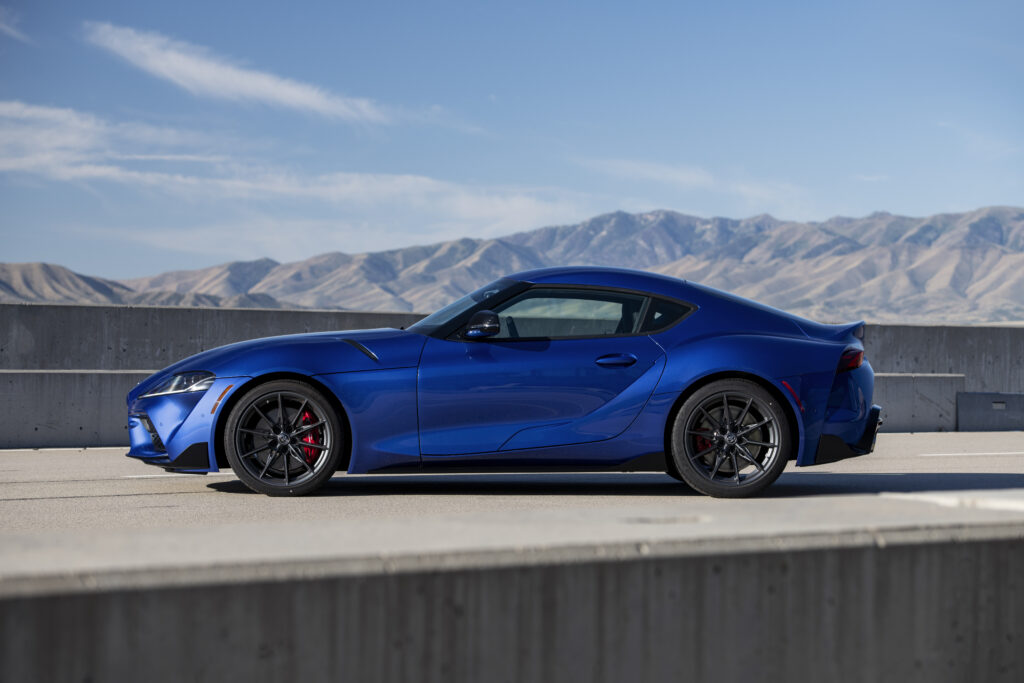Tale of Two Toyotas: GR Supra vs GR86
June 17, 2023

Toyota / The Lux Cut
Brandon Randall
Auto Editor
Toyota is known for its forward thinking approach to building cars. They’re also very good at remembering the early models that were groundbreaking enough to put them on the map. As a sort of love letter to two of these models, the AE86 and original MK, Toyota has brought us the GR86 and fifth-generation Toyota Supra. Though Subaru and BMW played a big part in developing these current generation track stars, everything Toyota learned from past successes with these vehicles shines brightly through.
From the late 70’s and into the early 1980’s, The AE86 and original Supra had lots in common. They both focused on responsive steering, nimble handling and fast revving engines. Making them ideal for Japan’s mountainous terrain, with its many narrow, winding roads. Helping Japan develop small cars that were better known for tight maneuverability than straight-line speed and brute strength. Fast forward a handful of decades, and you’ll find that the 2023 GR86 and GR Supra have stayed true to this core performance philosophy, while simultaneously making considerable improvements across the board.
Don’t be fooled by the similarities in size and dimension between the two. A price tag on the Supra that’s nearly double the GR86 should be enough indication that there’s plenty of differences to be discovered. Let’s dissect them both and see what these sometimes small, sometimes big differences are exactly.

On the inside, the first thing you’ll notice is that the Toyota Supra has surrendered all delusions of a back seat, with just the driver and passenger buckets. The GR86 continues to entertain the fantasy that it can comfortable haul four. In the back, there is something that mildly resembles additional seating. But the reality is you either have to be a young child, or comfortable sitting cross-legged. You’ll find an extra 4.0 cubic feet of cargo room in the Supra, along with an inch or two of extra leg, head, hip and shoulder room. In cars as tight as these though, every inch can feel like a mile.
Unsurprisingly, finishes are also significantly better in the more expensive Supra. While the ultra-suede seats with leather bolsters in the GR86 look nice, they’re a tight fit. An all black color scheme works well in the 86’s cabin, with additional suede treatment on the doors and above the steering wheel. It’s a small car though, with a big concern over maintaining a low curb weight. At a scant 2,833 lbs, it’s nearly 600 lbs lighter than the similarly sized Supra. It achieves this by sacrificing things like sound-deadening material, insulation and more. Combine that with all the plastic interior panels, and you’ve got the making of an awfully loud cabin. Especially at highway speeds. Delivering more refinement is the GR Supra. With leather, padded paneling and lots of carbon fiber components so you’ll never forget its rich racing pedigree. A more insulated cabin also helps with those obnoxious decibel levels at high speeds. A good thing, since high speeds are where the Supra feels most at home.
Speaking of performance and the general business of going fast, here’s where the differences between these two models really pile up. Both cars, thankfully, come with the option for a 6-speed manual gearbox. While the GR86 is great, the Supra will rev match as you shift. The throw is short, with a clutch that grabs but doesn’t give you whiplash. A big applause to Toyota for knowing its customer and recognizing the inherit nostalgia and fun that can be found running up and down the gears with a traditional shifter. Both cars feature the coveted front engine, rear wheel drive configuration. One look at the rear tires though, and even a novice could deduce which is putting down more power. The Supra’s wheels are 10 inches wide, compared to 7.5 in the GR86. Even with a wider contact patch, the Supra can be just as tail happy as the GR86. Always willing to allow a nicely controlled slide when the mood strikes.

Powering our ambitious little 86, and perhaps where Subaru’s influence is felt the most, is a 2.4L horizontal 4-cylinder engine. Capable of making 228 hp without the aide of a turbocharger. As was the case with the former AE86, you’ll need to keep the revs way up to tap into the full potential of this flat-4. As it only makes peak power above 7,000 rpms. The GR Supra on the other hand, uses a 3.0L inline 6 cylinder engine with a turbo. This larger, turbocharged power plant will spool out 382 hp and 368 lb ft of torque. What’s most impressive though is that you’re able to access all of that torque at just 1,800 rpms. This helps it achieve a neck snapping 0-60 in just 4.3 seconds. Nearly two full seconds faster than the GR86 at 6.1. Both vehicles use a MacPherson strut suspension, with driver adjustability options for the Supra. Handling is tight, responsive and communicative is both, though less punishing overall in the softer, more compliant Supra.
At the end of the day, the 2023 Toyota GR86 and GR Supra represent two approaches to a fun, fast and toss-able FR sports car. You’ll certainly be paying more for the extra power and polish found in the Supra, but the GR86 looks great, is tuner-friendly and the perfect starting point for any bolt-on upgrades, turbo kits or other cosmetic and performance improvements you could possibly dream up. These two models, perhaps better than any others, demonstrate Toyota’s commitment to building fun, engaging cars for these modern times. Cars that draw inspiration and build upon the early models that helped catapult the brand to where it is now. Something any auto enthusiast can deeply appreciate, and that other manufactures would be wise to emulate.
Toyota GR Supra 3.0 Premium MSRP: $56,150
Toyota GR86 Premium MSRP: $32,068
Related
Brandon Randall
Auto Editor






